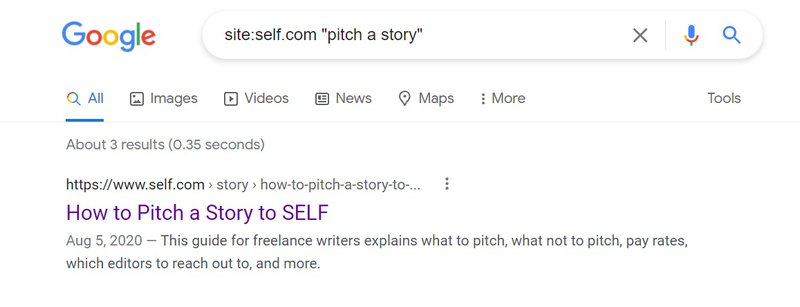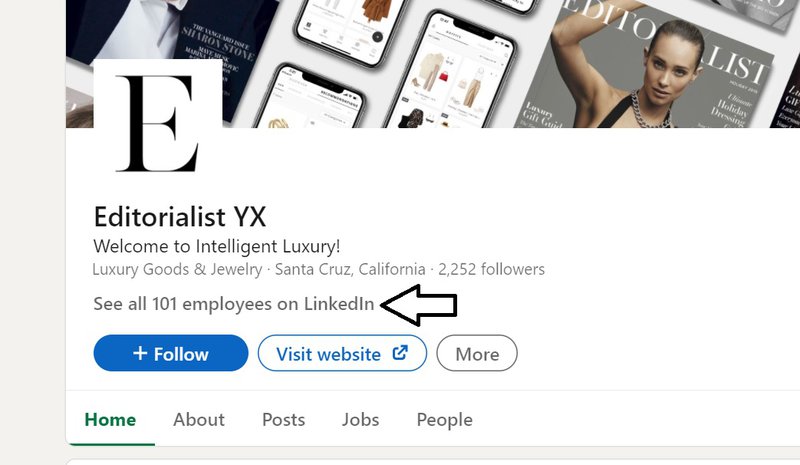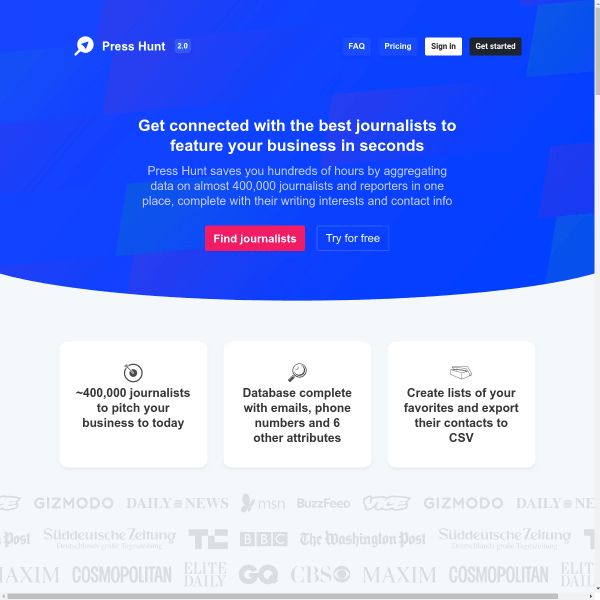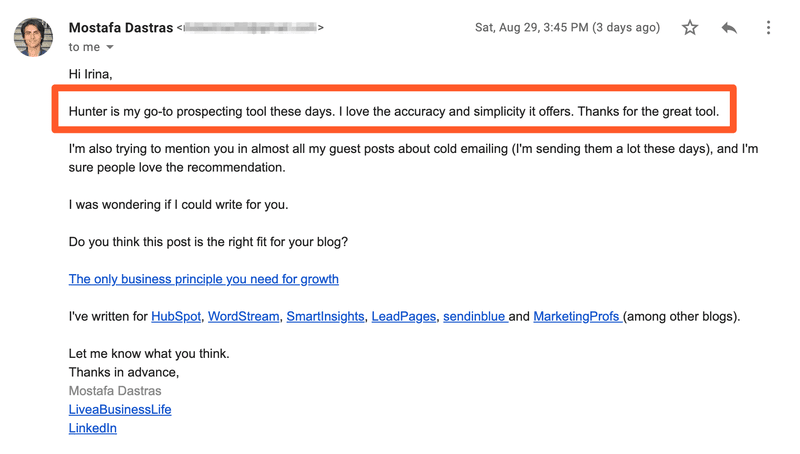PR for eCommerce: Top Strategies to Spread the Word About Your Business
The Ultimate Guide to PR for eCommerce. Learn the top strategies, tips & tools to connect with journalists and get your product featured on large publications.
Updated November 6, 2024
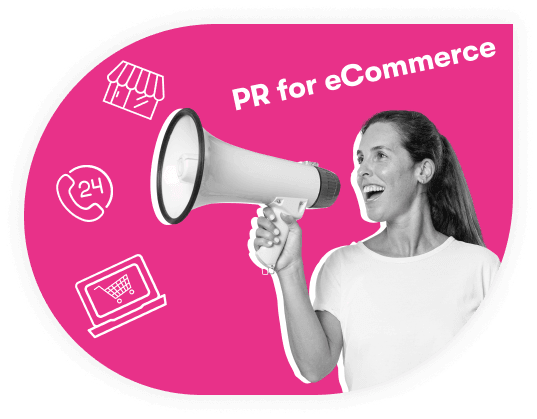
How many times have you bought a product just because you've heard about it or read an article about it online? Without really knowing what it does or if it's really better than the alternatives? Consumers make emotional decisions based on word-of-mouth recommendations all the time.
And that's exactly how PR works.
Ecommerce brands use public relations to publish articles and high-profile product testimonials to get more brand recognition, which leads to more traffic and more sales. Studies show that using PR consistently as part of a larger digital marketing strategy can increase brand revenues by 20%.
In this article, we break down all the important questions - what is PR? How does it work? And how your eCommerce brand can leverage public relations to increase revenue.
What is PR?
Public relations is a strategic communication process that builds mutually beneficial relationships between organizations and their audiences. In simple terms, it’s a strategy to communicate how valuable you are to your audience through earned media.
PR often encompasses a variety of practices and realms. Ecommerce companies can establish strategic communication through a variety of marketing channels.
These can include public gatherings (meetings, speaking events, etc.), TV or radio interviews, social media influencers on a variety of platforms (Facebook, Instagram, YouTube, etc.), newsletters, websites, and blogs (niche blogs, industry blogs, and online publications).
Each of these outlets needs separate strategies and people to handle them, resulting in a different type of coverage. Strategies include event marketing, guest speaking, social media marketing, influencer marketing, sponsorships, and content marketing, with their various aspects and approaches, all fall under PR.
A complete PR strategy demands rigorous resource management to be successful.
Advertising vs. PR - what is the difference?
Advertising and PR (public relations) are both essential parts of the marketing strategy of any business. They’re both used to spread the word about your business, usually on social platforms, and drive traffic to your eCommerce website. However, they are two distinct marketing channels that use quite different approaches.
Advertising is known for its pushy and assertive messages that maximize your brand exposure, PR uses rather unobtrusive approaches in order to establish a positive reputation for you.
Advertising aims to secure guaranteed placements on chosen outlets (paid media such as popular websites), and it’s often more expensive. And because it’s expensive (and somewhat annoying for the user), it tends to be cut to the chase. It’s more about your brand and how extraordinary you are and aims for clicks.
PR, on the other hand, is more focused on telling a story about your brand and showing your human side, rather than pushing a promotion. The final goal is to establish you as a sympathetic brand that aims to solve a serious problem for your audience.
The big difference here between advertising and PR is that advertising relies heavily on paid media and its content is often labeled as an advertisement, but PR takes advantage of earned media.
That is, it convinces other media owners to talk honestly about your business through their typical native content, rather than ad placements. As such, the content that PR promotes is more natural and customer-centric.
So even though PR and advertising are both scalable customer acquisition channels, their goals and strategies are entirely different.
How does PR for eCommerce work?
PR for eCommerce brands starts with a manual or automatic outreach to a contact list of journalists or bloggers. Brands usually send hundreds of pitches to get several publications to agree to publish a news item or a product review.
So start with a small target list and approach journalists with customized and personalized pitches, and make sure to connect with them on social media channels as well.
A lot of brands do this to boost their rankings for their Amazon listings. Amazon Marketplace rankings improve when they get more traffic and when Amazon editorial recommendations grow. Another great way to get wider coverage is by working with video bloggers and Youtubers. Some brands use what's called a performance PR model where the publication only gets paid when they bring clicks, leads, or sales to the business.
It's a much more cost-effective way to work with publications than the traditional press release model where the brand pays high fees without any kind of guarantee that they will get any sales out of it.
In the performance PR model, the publication is responsible for writing an engaging piece about the brand and driving enough traffic to it to get paid.
One great way to optimize conversions from your PR campaign is to use retargeting tools - such as email marketing and retargeting ads - to engage with those visitors that don't immediately convert on your site.
The key here is to build a fruitful relationship with each journalist or content creator in order to get more coverage for products and gain access to a wider audience.
Let’s discuss some of the top PR strategies in greater detail.
Top PR strategies for Ecommerce
Multichannel eCommerce has made it possible for business owners to reach a wide range of potential customers on a variety of media outlets. The PR strategy you choose for building relationships with media owners depends a great deal on the media channel itself.
For example, PR isn't just about reaching out to journalists. As an eCommerce business, you know that your audience spends a huge amount of their time on social media, so building relationships with influencers on a variety of social media channels is a necessary part of your PR strategy.
Typically, a PR strategy starts with obtaining a list of contacts and goes on to convince them to cover you through their native content.
So an effective eCommerce PR strategy has three main parts:
- Prospecting
- Pitching
- Maintaining relationships
In this article, we deal with the first two aspects of the process. Once you do them right and establish trustworthy relationships, it’s quite easy to keep in touch with your contacts and maintain your relationships.
Prospecting
To do prospecting right, you need to have a clear idea of your target prospects. When doing prospecting for PR, you need to reach out to content creators such as journalists, bloggers, content managers, video creators, and photographers.
However, you don’t want to reach out to just any content creator. You need to define the exact kind of content creator you need based on your target audience. The main question you want to answer is “does their content reach your prospective customers?”
In this bottom-up approach to prospecting, you need to search for the right content first, and then find the creator.
Start with the top websites you know
You’ve definitely heard of some blogs or websites in your niche. Add them to your list. It could be industry bloggers, video bloggers, or larger blogs that cover eCommerce products.
Search Google for the keywords that these websites might target.
Bear in mind that you’re trying to find news/review websites that rely heavily on Google traffic. So you can easily find them by Googling the keywords they’re trying to rank for. Anything related to your industry could help.
How about searching for your giant corporate competitors that get lots of news coverage? If you search for “Adidas” in Google and head to the “News” section (or simply search “Adidas + news”), you can find lots of publications that cover shoe-related products and news.
If you are an eCommerce startup then you should avoid the larger news outlets unless you have a noteworthy news item to share. Better to focus on the smaller guys first before going after the big publications.
The number and quality of the websites you could find depend on how well you do your research. You need to try different kinds of keywords to find as many websites as possible.
It helps to know that typically short-tail keywords (generic, high-volume, highly-competitive keywords) are targeted by top websites, and long-tail keywords are typically targeted by smaller niche websites.
The keyword “Adidas” in the example above is a short-tail keyword. A long-tail keyword in the sportswear industry might be “types of sneakers for guys”, “top sneakers brands”, or “things to know before buying shoes”. These keywords would more likely direct you to a niche blog about fashion and clothing.
You could also search for "Adidas" + "reviews" to find blog reviews. Bloggers love reviewing eCommerce products and you could find a whole group of bloggers that work with eCommerce companies to create holiday guides and other long-form content.
Search on social media platforms
Google is not the only place to find relevant websites. There are several other resources. You could try searching through social media platforms.
Twitter in particular makes it easier for you to find journalists that frequently share content in your industry. Youtube is ideal for finding video creators that could review your products and increase awareness about your brand.
From time to time, you might stumble upon an engaging piece of content, social media post, or video that piques your interest. Research a bit about the website and its authors to find similar sites to reach out to. Use content marketing tools that help you automate the whole process.
What criteria should you use to pick content creators on social media?
There are several factors you need to look at before you decide to reach out to a particular influencer or content creator on social media.
Here are the main ones:
- their social media followers
- the engagement rate on their social media posts
- the impressions or views they get
- their previous industry
- related sponsorships and sponsored content
- their audience
Extract contacts
Once you found some websites that you think might be the right fit for you, it’s time to decide who to reach out to. There are several ways you can find prospects here.
As your first option, you can reach out to the author of the article you stumbled upon. Chances are that the author is interested in this topic and writes frequently about it.
A simple Google search can usually help you find all the contact information you need. The author might have a public email address or a personal website through which you can contact them. If you couldn’t find their email address, you might be able to reach out to them on social media.
The second option is to reach out to the people responsible for content on a particular website if you’re interested in getting some content published on that website.
First, you need to check out the website and see if they have any links to their guidelines for contributing content. They could place these links in their menus or homepage footer.
If you can't find any links there, you can open their “contact us”, “about us”, or “partner with us” pages and see if there are any guidelines for contributing or pitching stores there. Typically they encourage you to inquire about media-related issues through a particular email address. You can go ahead and send them an email asking about their guidelines.
In some cases, you might have some luck with searching for their guidelines pages. Some publications do have these guidelines, but they don’t make them accessible easily. You might have to search through their website to find it. Here’s how you should search through their website:
In the Google search bar type this:
Site:website.com “contributor guidelines/pitch a story/writer’s guidelines/ etc.”
You can also reach out to people responsible for content published on these websites (website owners, content managers/specialists, editors, copywriters, or anyone with the word “content” in their title).
To do this, you can check out their “about us” or “our teams” pages. If you can’t find anyone there, try searching their company's LinkedIn page and see look through their list of employees.
You can also explore their blog posts and see if one particular author's name is repeated in most of their articles. Chances are that person is in charge of content production for the website.
How to find the email addresses of journalists
Here’s how I find the business email addresses of the people I want to reach out to (if I can’t find them on their websites, i.e. “contact us”, “about us” or “our team” pages).
I open my Gmail page and click “compose”. In the recipient section of the compose window, I test one of these email formats:
- first@company.com
- first.last@company.com
- firstlast@company.com
- firstinitiallastname@company.com
- firstlastinitial@company.com
Each time I type one of these emails there, I hold my cursor over their email to see if it's associated with a Google account. If it shows an image (their headshot) it means that the email address is valid.
Another way is running your contact list through an email validation tool like ZeroBounce. It's a great tool that helps you filter through emails and get verified emails for the journalists and writers that you're trying to reach.
Use a PR tool
Another great way to get the emails of journalists, especially from the larger news outlets, is to use a PR tool to automate the process.
A great tool I like is Press Hunt which has a database of 580,000+ journalists from a variety of publications. It also has advanced features that let you create email templates and send out up to 10,000 emails every month from your own email address.
You can use this tool to create an outreach list of thousands of industry bloggers, podcasters, and journalists. What's great about Press Hunt is that it gives you access to big-time journalists that write for the larger news outlets and can give you exposure to thousands of potential customers.
How to do a PR pitch
Once you have your contacts ready, it’s time to reach out to them and pitch your idea. You should always approach journalists or bloggers that you already have a relationship first. After that, you can expand and pitch to journalists that write about eCommerce in general or the specific industry that you are in (apparel, jewelry, fitness, etc.).
Here are several ways to pitch to journalists and bloggers
- Ask them to review your products
- Pitch them a story. This could be an opinion post, a how-to guide, etc.
- Offer them to interview you.
- Offer a partnership idea for content production or promotion (you help them create/promote their content and they help you create/promote your content).
- Or any relevant elevator pitch based on the kind of content they publish frequently.
Don't be salesy.
Think of it as a content collaboration rather than a sales pitch. These editors get hundreds of pitches every month so make sure that yours stands out in the crowd. It should be interesting enough to cover, whether that's your product or a news item about your company. Don't use fancy graphics, make it a plain text email.
Always be relevant
Relevance is the most important factor in the success of a PR campaign. You need to make sure your pitch is what they’re looking for.
ّFor example, it’s obvious that a website that doesn’t publish product reviews is not interested in reviewing your product, so instead of sending them a “product review pitch”, why not pitch them something they frequently publish?
It could be an interesting story, a how-to guide, or an opinion article. You need to check out their content and see what they publish.
If they have a series of interviews with business owners, ask them to consider interviewing you. If they have lots of roundup posts, why not ask them what their future posts will be about so that you might add something valuable to it (i.e. a quote, research, an image or video, etc.).
If you find a lot of guest posts, then see how you could contribute and write a compelling piece for their blog.
Even if you’re asking them to review your product, you need to mention your most iconic features, or your unique value proposition, to help them with the reviewing process.
- What makes your product unique?
- Why should people abandon their current products and use yours?
Spend some time researching your customers’ experience with your products, and share your results with those publications.
How to perfect your email pitch
Your email design plays an important role in convincing your recipients. Most email inbox interfaces display three parts of your email - the sender’s name, the subject line, and a portion of your email’s body.
Personalize the sender’s name
The sender’s name is arguably the most recognizable element that a reader sees when scanning a list of emails. I personally prefer the combination of your first name + your company’s name.
Honest subject lines work best
Avoid deceptive and clickbait subject lines at any cost. If you can’t come up with a clever (but honest) subject line, a description of what the email’s about is a good place to start.
Pay special attention to the first few words of your body copy
People are going to judge your whole email based on the few words that are visible in the preview part of your email. Spend time to make them interesting and engaging.
The body of your emails has one singular goal: get people to act. It should not divert from what you have promised in your subject line and preview text. You don’t want to lose people’s trust in what you're trying to do.
Be clear about your offer, keep your text short, and explain why they should trust you. Include an email signature with your contact information and your LinkedIn page (or your personal profile on your website -- anything that proves who you are and where you work).
This email got me featured on a top website (although they didn’t accept my original pitch) and eventually landed me a client.
Check out Hunter’s directory of cold email templates to find more inspiration for your email content and subject lines.
Start small, grow incrementally
It’s important to know that PR is a long-term strategy. So whatever reason you have in mind for your PR campaigns (increasing domain authority, driving traffic to your website, spreading the word about your business, establishing a positive reputation, etc.) it takes a long time to get there.
First attempts typically fail as you’re still tinkering with the right prospecting strategies and the right messages to send.
I recommend you start small. Don’t aim for national news sites or top websites in your niche first (unless you have a very important story). Start with niche blogs and websites with lower traffic.
Establish your authority and gain experience in prospecting and outreach. Build relationships with bloggers and content managers (you’d be amazed at how they can help introduce you to top bloggers/journalists).
And only when you have enough authority and experience, reach out to top blogs/news websites. In other words, start small and grow incrementally.



